- News
- Reviews
- Bikes
- Accessories
- Accessories - misc
- Computer mounts
- Bags
- Bar ends
- Bike bags & cases
- Bottle cages
- Bottles
- Cameras
- Car racks
- Child seats
- Computers
- Glasses
- GPS units
- Helmets
- Lights - front
- Lights - rear
- Lights - sets
- Locks
- Mirrors
- Mudguards
- Racks
- Pumps & CO2 inflators
- Puncture kits
- Reflectives
- Smart watches
- Stands and racks
- Trailers
- Clothing
- Components
- Bar tape & grips
- Bottom brackets
- Brake & gear cables
- Brake & STI levers
- Brake pads & spares
- Brakes
- Cassettes & freewheels
- Chains
- Chainsets & chainrings
- Derailleurs - front
- Derailleurs - rear
- Forks
- Gear levers & shifters
- Groupsets
- Handlebars & extensions
- Headsets
- Hubs
- Inner tubes
- Pedals
- Quick releases & skewers
- Saddles
- Seatposts
- Stems
- Wheels
- Tyres
- Health, fitness and nutrition
- Tools and workshop
- Miscellaneous
- Tubeless valves
- Buyers Guides
- Features
- Forum
- Recommends
- Podcast
review
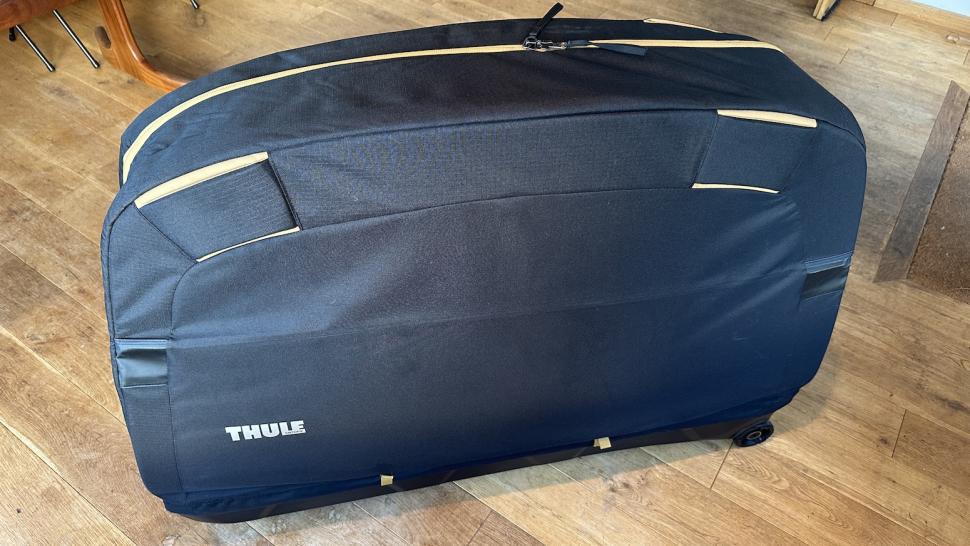 Thule RoundTrip Road Bike Travel Case
Thule RoundTrip Road Bike Travel Case£699.99
VERDICT:
Close to hard case protection, but collapsible and easy to use – an excellent choice for frequent travellers
High-quality construction
Holds handlebars solid
Folds up compact
Sturdy wheels
Relatively intuitive
All spare parts available
Drivetrain protection
Five-year warranty
Price
Weight
Bikes with long wheelbases will struggle
Cable droppers on large frames will struggle
Need to provide own disc spacers
Weight:
12,500g
Contact:
At road.cc every product is thoroughly tested for as long as it takes to get a proper insight into how well it works. Our reviewers are experienced cyclists that we trust to be objective. While we strive to ensure that opinions expressed are backed up by facts, reviews are by their nature an informed opinion, not a definitive verdict. We don't intentionally try to break anything (except locks) but we do try to look for weak points in any design. The overall score is not just an average of the other scores: it reflects both a product's function and value – with value determined by how a product compares with items of similar spec, quality, and price.
What the road.cc scores meanGood scores are more common than bad, because fortunately good products are more common than bad.
- Exceptional
- Excellent
- Very Good
- Good
- Quite good
- Average
- Not so good
- Poor
- Bad
- Appalling
The Thule RoundTrip Road Bike Travel Case is a very well-designed – if expensive – way to safely carry your road or gravel bike on long trips. Packing down small for storage between or during trips, with all parts available and a long warranty, it's a solid investment – if you've got the cash.
For other ways to to keep your prized possession safe when travelling, check out our guide to the best bike boxes and bike bags.
> Buy now: Thule RoundTrip Road Bike Travel Case for £595 from TrailerTek
Bike cases are indispensable for people who frequently travel with their bikes. Yes, you can use a cardboard box and a load of random packing from a bike shop – and many people do. But the challenge is then what to do with it at the other end of your flight or trip – assuming the box and packing is in a fit state to be re-used. Often on a trip with a bike you need to take the box with you – either in a car, or to be stowed in a hotel room. As someone who's done a fair bit of bike-plane travel, removing the hassle of managing giant, relatively easily damaged cardboard boxes is a non-negotiable part of holiday or work trips.
The Thule RoundTrip case has a few party tricks. Firstly, it folds down to only 25cm high, to fit easily in the boot or on the back seat of a car once your bike is removed and assembled and on the roof or back seat (blanket essential here, folks). When folded, there are two straps that wrap around and cinch the package tight, and a carry handle on the top. This also means storing the RoundTrip at home is a doddle, as it will fit under most beds or upright in a cupboard or wardrobe.
(If you'ree wondering how you'd also carry a bike roofrack when travelling, the answer is a Seasucker Talon Bike Rack.)
In the frame
The other party trick of the RoundTrip is the frame it sits on inside the case. With most bike boxes or bags, the fork and bottom bracket are fixed into mounts that are attached to the bottom of the box/bag. In the RoundTrip your bike is fixed to an adjustable frame that can be removed and turned into an assembly stand on a tripod for faffing with the handlebar and rear mech. That also means if you need to do any bike maintenance or even cleaning on your trip, you have a workstand with you.
The workstand has three legs with broad feet that slide into the 'head' and are then clamped down. Once you've made your tripod, the frame can be clamped in place. It's pretty easy to guess the balance point; the frame can slide on the head in either direction and the locking lever is solid, with a safety catch to prevent unwanted ejection.
The fork dropouts are supported by a head that ingeniously fits traditional quick release plus 12x100mm, 15x100mm, 20x100mm, 12x110 and 15x110 (Boost) thru-axles. You switch between dimensions by swapping around two plastic three-holed inserts. These could be better labelled, and it's rather important to get the arrangement correct.
Once you've removed your pedals, you loosen the bottom bracket (BB) support locking handle, and slide it so as the BB will be supported when the fork is fixed in place. This takes longer to type than to do. The BB sits on a spongy pad with channels cut into it, to accommodate cable outers running externally over the outside of the BB shell without crushing them – nice. Once the distance is correct and the fork is secure, the frame is fixed down using a strap over the top of the down tube. The driveside crank needs to be rearward at this point.
Then you remove the back wheel, and install the cover over the rear mech and chain. You may or may not have to remove the mech depending on clearance, but it likely only needs removing if you have a very long bike. Thule doesn't mention if you should re-install your rear axle – I would as best practice, ideally with a spacer tube the same width as your hub, to prevent compressive frame damage. Mind you, the frame is so well protected by the bottom of the case when packed that a side impact would need to be catastrophic to get through to the dropouts and bend your chainstays inwards. Still, a dummy hub spacer can't hurt.
I sold my nervous – sorry, performance – 23mm-tyre-clearance dedicated road bikes long ago, and now my 'road bike' is an XL Sonder Camino Ti Gravel bike with wheelset and fat tyres to suit the ride du jour and my ageing reflexes. The long, sketchy-gravel-friendly 1,140mm wheelbase means my Camino Ti is right on the ragged edge of fitting in lengthwise. I also run a Wolftooth Goatlink mech extender for the 11-50T cassette needed for gravel and bikepacking hereabouts, and that means for this bike, the rear mech needs to be unbolted before the case will close. Fortunately, the way Thule has structured the protective bag that the rear mech drops into and is then secured around the chainstay makes this a pretty painless operation. Just be sure to secure your mech dropout bolt if it's not captive.
Because Gravel, my Camino Ti has an internally cabled dropper post. No way am I uncabling the dropper to pack and unpack the bike, so this means the seat poses a challenge. My Camino Ti with this dropper measures 660mm from the BB to the saddle top with the dropper down and post fully inserted, which should be considered about the maximum possible distance if you're leaving a seatpost/saddle in place. For normal seatpost/saddle combos, this gets removed and popped into its own protective bag to be fixed with Velcro under the top tube, or off a chainstay or seatstay. Maybe if you're travelling regularly with a very large frame and want a dropper, a wireless one is the way to go.
At this point, if you're running hydraulic discs then you'll need to remember your own disc spacers to suit your callipers and pads. The chances of accidentally squeezing your brake lever in dis- or re-assembly is high, and you don't want to be faffing with prematurely-advanced pistons and pads at the start of your holiday ride. Thule doesn't include any spacers, which is fair enough as there are so many options out there. Pop into your local bike shop and ask nicely for some spacers to suit your callipers – chances are they'll have a box of them, as many new bikes and all new callipers/brakesets include them in the packaging.
Bar packing
Once the callipers are safe, what is usually the most fraught part of a bike packing process begins: securing the handlebar. You loosen the stem and lift it clear of the steerer, and slide an ingenious 'vest' down over the steerer tube, top tube and down tube. This secures under the fork, cinching the front of the bike tight and ensuring no bearings rattle loose in transit or if your bike is tipped upside down – nice.
Also, because you're leaving your bar bolted firmly to your stem, there's no faffing with multiple faceplate bolts later. If you're travelling with an old-school quill stem you'll need to loosen the stem clamp and rotate the stem out of the way.
All of this begs the question of how bikes with fully integrated cables running through headsets get on with boxes or bags that require bar removal. The answer is, they typically don't – you need a dedicated box that leaves the bar in place. Chapeau, bike industry. Woo hoo.
Anyway, if your bike cabling is sensible and not what some might say is a victim of a needless and expensive trend forced upon an increasingly disparaging public and mechanic community (and breathe), you'll be able to now twist the bar around and use the Velcro straps to fix it in place on the 'vest'. You may need to remove or shift any light or computer clamps, if they are set wide on the bar. Again, Thule has put a lot of thought into how this works.
Now you undo the bike and rail from the tripod, and click it into place inside the base of the case. Again, you need to check that any still-attached mech doesn't foul the end of the case.
Now it gets cleverer-er. You disassemble the tripod and click the head onto the rail for safe keeping. The three legs get slid into webbing on the top and sides of the inner padded part of the case to provide rigidity. Your wheels then slide, disc rotors inwards, into the rotor pocket on each side – so you specifically don't remove your rotors with this case. The wheels are held in place with wide Velcro straps long enough to easily accommodate 700x55mm tyres. There are labels for placing front and back wheels, and hub endcap protector pads.
Your pedals and rear axle slip into separate pockets in one of the outer sides, and then you remove the swivelling front wheel from its holder and click underneath to allow the case to roll. This needs to be removed and re-stored at check-in. If you don't want to faff with the swivelling wheel, you can grab the handle in front of the base and lift the case on an angle to wheel short distances easily. The zips can be locked together with a small padlock if you're worried about security.
Pack in 10
All of this may sound complicated, but it's relatively intuitive – I deliberately ignored the instructions on my first go packing a bike, and got it right in about 20 minutes. With practice I got down to 10 minutes from case folded/bike intact, to fully packed. Unpacking was the same duration – from just-landed-in-Mallorca to ready-to-die-on-Sa Calobra in 10 minutes. If you forget any step in the process or lend your case to someone, there's a QR code sewn inside the case to access the manual online.
Easy hefting
In use I found the RoundTrip to be an excellent travel companion. The multiple handles make for easy hefting in and out of vehicles and on and off of trains, and I never feared any damage given how robust the assembled case is. The very sturdy base, thick double layer of padding plus the folding rigid sidewalls with 5mm corrogated PVC reinforcement, clever positioning of the wheels, along with the tripod legs for rigidity, all adds up to a very solid cocoon for your beloved. The wheels roll easily and quietly over rough surfaces, and the handles are nice to hold while walking.
The RoundTrip weighs 12.8kg – that's a fair old chunk of your baggage allowance (usually between 23 and 32kg) right there. You can pack the tripod head in your hand luggage to save a bit of weight, but not much.
My Camino Ti weighs 10.5kg with fat, thick 700C tyres and the dropper, so I'd be a smidge over the typical 23kg limit. The quickest weight loss for this bike would be to pull the cassette off the hub (no tools required thanks to Hunt Wheels' genius design, but remember the wee red internal spacer) and sling it in hand luggage.
> The stuff they never tell you about flying with your bike
If an airline – or friend – ever damages or loses any component of the case, pretty much everything is available as a spare, including the wheels, the entire assembly stand, and all the accessory covers and bags. There are 14 separate spare parts in total.
On the subject of things breaking, the RoundTrip comes with a two-year warranty – extendable on registration for another three – for a total of five years. Between that and the spares availability, you should have confidence the significant investment will be secure for years to come.
The mountain bike version of the RoundTrip is similar except in dimension – measuring 20cm longer, 5cm wider and 4cm taller, and weighing just under a kilo extra. This larger size might be attractive if you're riding a very large drop-bar bike, but unfortunately the way the handlebar is secured differs. The mountain bike case has the bar lying flat down the left fork leg, on the outside of the first layer of padding. Looking online, with some creativity people have had success securing drop bars inside the mountain bike case – which means if you travel with both kinds of bike you only need to buy that one case. At circa 13.4kg it's unlikely you'd avoid excess baggage weight charges with a full-sus mountain bike. As of 2024, BA charges a flat £65 per leg for excess between 23 and 32kg.
Value
Yes, the rrp is a penny under £700 – though, as ever, look online and you can find it for less, around £600-£650, and if you're passing through Germany you can get one for more like £500.
The main alternative to consider is the £600 (also often cheaper) Evoc Bike travel Bag Pro, which I gave 4 1/2 stars a few years back. It's about 2kg lighter, and can fit full-sized mountain bikes as well as any road or gravel bike. It lacks the removable workstand, and there's a lot more to do to build it up and fold it back down, including eight stiffener poles. If you had to build, collapse and then rebuild each trip, you might prefer the Thule offering. The amount of padding and protection is considerably less than Thule offers as well. Having used both and set them up/packed them down many times, I prefer the Thule for convenience and protection. Evoc only wins on weight.
Conclusion
The RoundTrip Road Bike Travel Case fills a pretty unusual niche in the world of bike boxes. It offers close to hard case protection, but packs flat enough to be easily transported or stored at your destination. The packing and unpacking process is relatively easy and quick, and you get a workstand included. Add in the warranty and spares availability, and the steep price looks more attractive for frequent travellers or groups of friends or cycling clubs looking to pool resources.
Verdict
Close to hard case protection, but collapsible and easy to use – an excellent choice for frequent travellers
road.cc test report
Make and model: Thule RoundTrip Road Bike Travel Case
Size tested: 124 x 33 x 85cm
Tell us what the product is for and who it's aimed at. What do the manufacturers say about it? How does that compare to your own feelings about it?
It's for people wanting to safely transport a road or gravel bike, and be able to store it compactly in between.
Thule says:
The safest and easiest way to travel with your road, gravel or cyclocross bike, with an integrated work stand for proper assembly and maintenance along the way.
Safely transports almost all road, gravel or cyclocross bikes, fitting wheelbase up to 110 cm
Included work stand makes bike maintenance, assembly and disassembly easier while travelling or at home
Easily fasten the bike to the workstand inside the case for safe and secure transport
Padded interior packing panels are tailored to protect all parts of the bike during transport
Rigid side panels are reinforced with 5 mm corrugate polypropylene and a moulded HDPE bottom tub provides superior protection
Folding sidewalls collapse and secure tightly for compact storage (just 124 x 38 x 24cm) at travel destination or at home
Swivelling front wheel makes for effortless manoeuvering through airports
Front wheel stores inside case when checking in bag, during storage and for easier loading and unloading of case
Brake rotor pockets locate wheels in the optimal packing position and protect rotors from bending stress while travelling
Specially-tailored packing components protect handlebar, seat, seatpost and drivetrain
Tell us some more about the technical aspects of the product?
From Thule:
Dimensions
124 x 33 x 85 cm
Internal dimensions
124 x 33 x 85 cm
Weight
12.5 kg
Colour
Black
Rate the product for quality of construction:
10/10
Made to Thule's typically high standards.
Rate the product for performance:
10/10
The process form start to finish is really well thought out.
Rate the product for durability:
8/10
Early days, but everything looks to be very hardwearing.
Rate the product for weight (if applicable)
7/10
The weight is considerable, starting to eat into the typical UK baggage allowance of 23kg for a large-framed bike.
Rate the product for value:
5/10
Expensive, but the protection balanced with features, warranty and parts availability make it worth the money.
Tell us how the product performed overall when used for its designed purpose
Can't fault it. The packing and unpacking process is easy and frustration-free.
Tell us what you particularly liked about the product
The workstand. It's brilliant for the weight and size.
Tell us what you particularly disliked about the product
Only the weight – but I can't see how you give up weight without also losing protection or features.
How does the price compare to that of similar products in the market, including ones recently tested on road.cc?
It's £100 more than the Evoc Pro, which is lighter but inferior.
Did you enjoy using the product? Yes
Would you consider buying the product? Yes
Would you recommend the product to a friend? Yes, but with caveats.
Use this box to explain your overall score
It's excellent. The only drawbacks are weight and price – everything else is great.
About the tester
Age: 47
I usually ride: Sonder Camino Gravelaxe My best bike is: Nah bro that's it
I've been riding for: Over 20 years I ride: A few times a week I would class myself as: Expert
I regularly do the following types of riding: cyclo cross, general fitness riding, mtb, G-R-A-V-E-L
Living in the Highlands, Mike is constantly finding innovative and usually cold/wet ways to accelerate the degradation of cycling kit. At his happiest in a warm workshop holding an anodised tool of high repute, Mike's been taking bikes apart and (mostly) putting them back together for forty years. With a day job in global IT (he's not completely sure what that means either) and having run a boutique cycle service business on the side for a decade, bikes are his escape into the practical and life-changing for his customers.
Latest Comments
- Rendel Harris 2 sec ago
Excellent point as usual, I must absolutely stop watching sport and I shall also stop spending a fortune at the Festival Hall, Wigmore Hall and so...
- Rendel Harris 9 min 43 sec ago
They do the same with the rugby, used to get all the premiership rugby and the European cup on BT sport, then it moved to TNT and all of a sudden...
- ktache 29 min 33 sec ago
Also, not an "accident". I heard Hamilton's crash in his new/old Ferrari referred to as the inappropriate term the other day.
- espressodan 36 min 39 sec ago
I wasted a lot of time on this. If you want to try to do it (semi) legally, i.e. paying for a subscription but violating TOS, anti money-laundering...
- anke2 1 hour 7 min ago
In fact, there is no useable wind-tunnel in the pictures...
- David9694 1 hour 25 min ago
Car crash that demolished wall on Ashley Road, New Milton, sees drink-driver Albert Dyba from Chesterfield banned from roads for 17 months...
- schneil 1 hour 33 min ago
I'm glad it's not just me that finds inconsiderate use of bike lights an issue. The main problem is how lights are sold. Most UK sold lights are on...
- David9694 1 hour 40 min ago
mildly interesting story - the operator of this site think there's more to be made from having Starbucks than the parking spaces that would be lost...
- Sriracha 1 hour 40 min ago
Despite? I'd have thought making the shell out of an excellent conductor of heat could only enhance heat dissipation. For sure, silver or even gold...
- Jaijai 2 hours 56 min ago
It really shows the incompetence of these governing body's. 7 months to decide that .
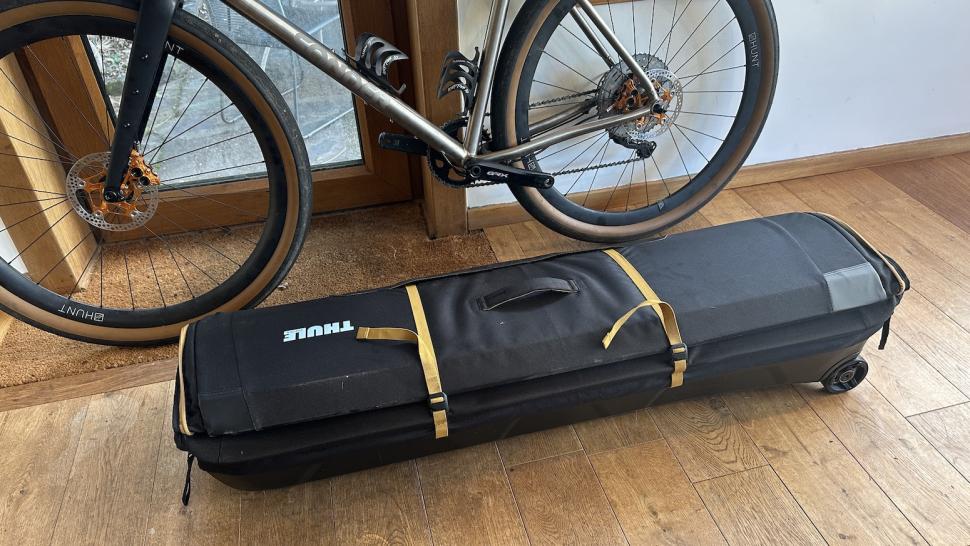



























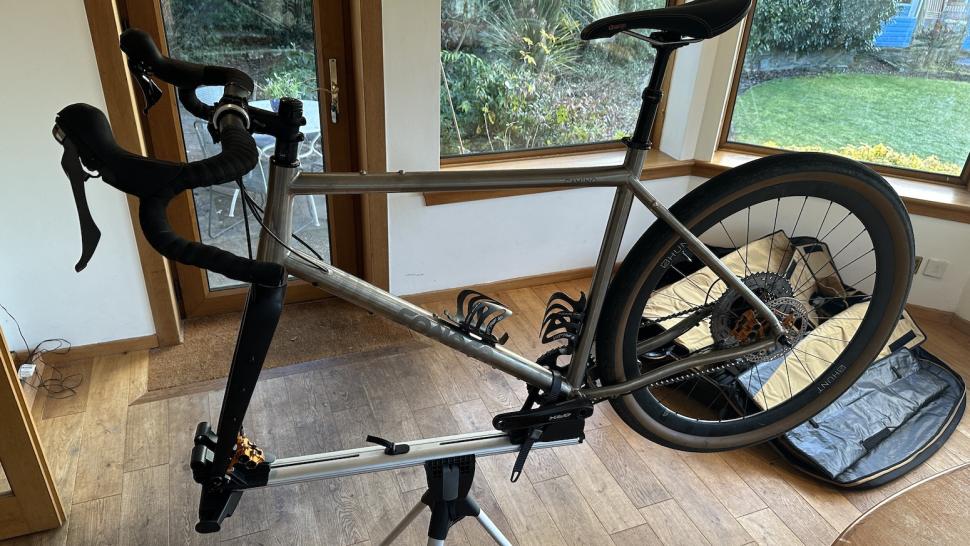
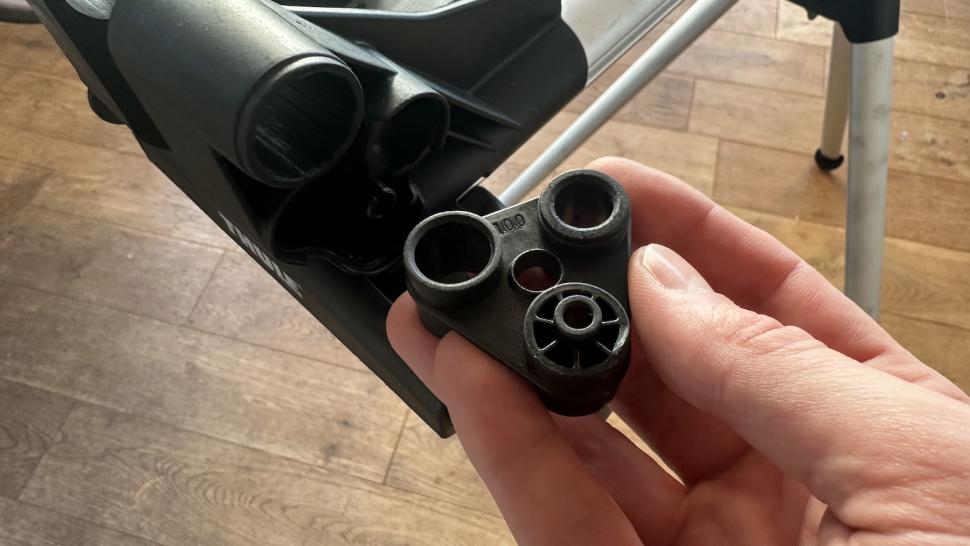
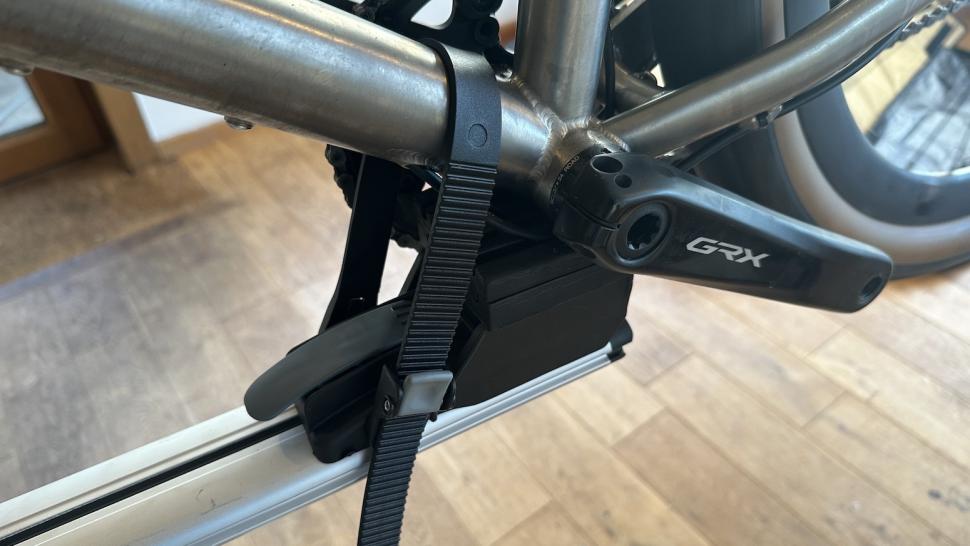
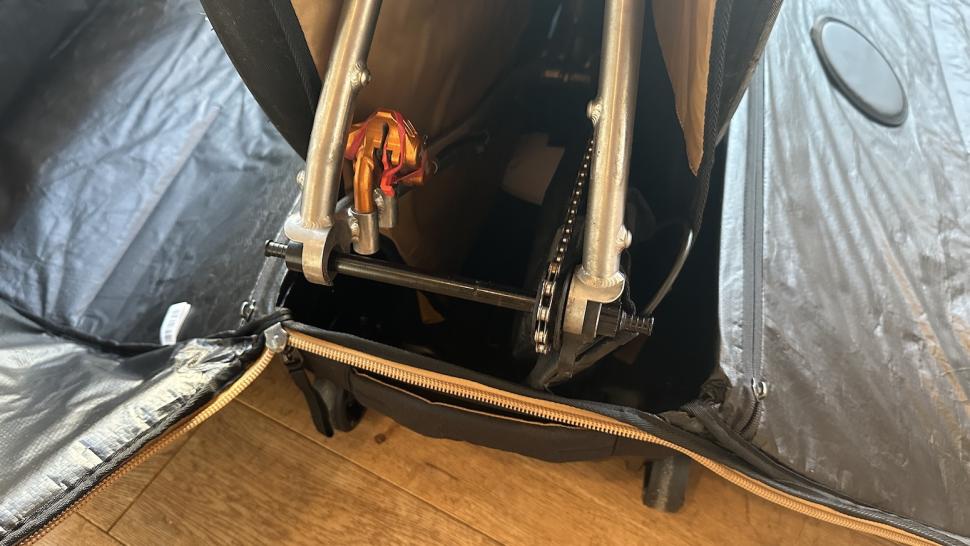
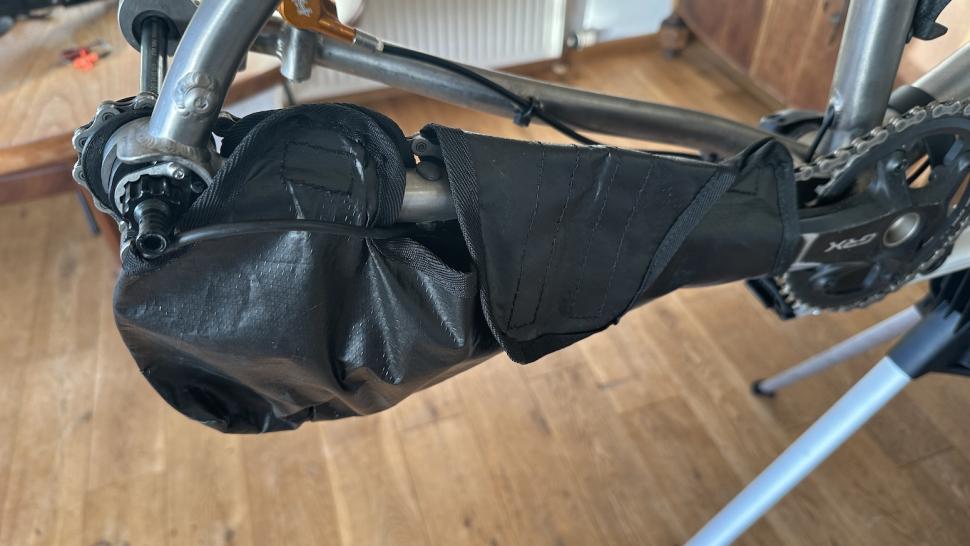
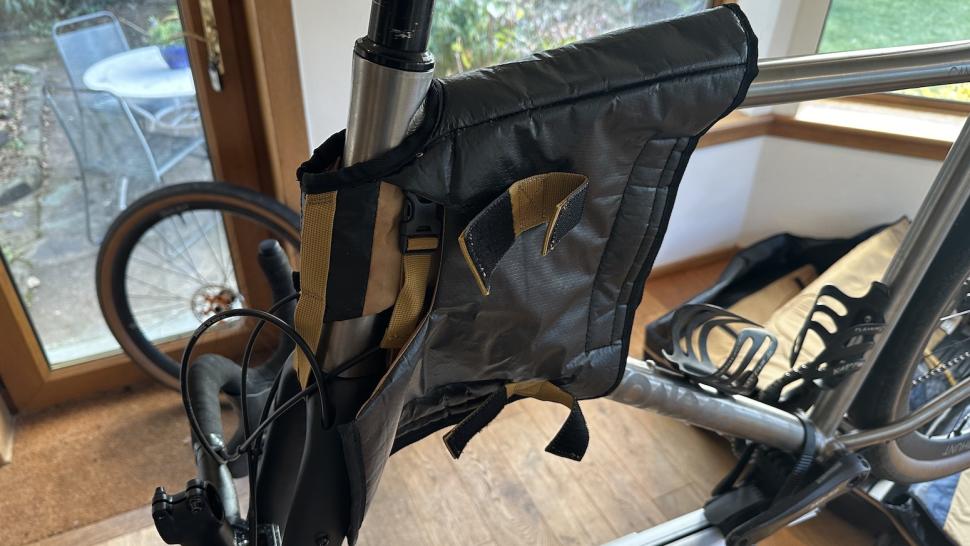
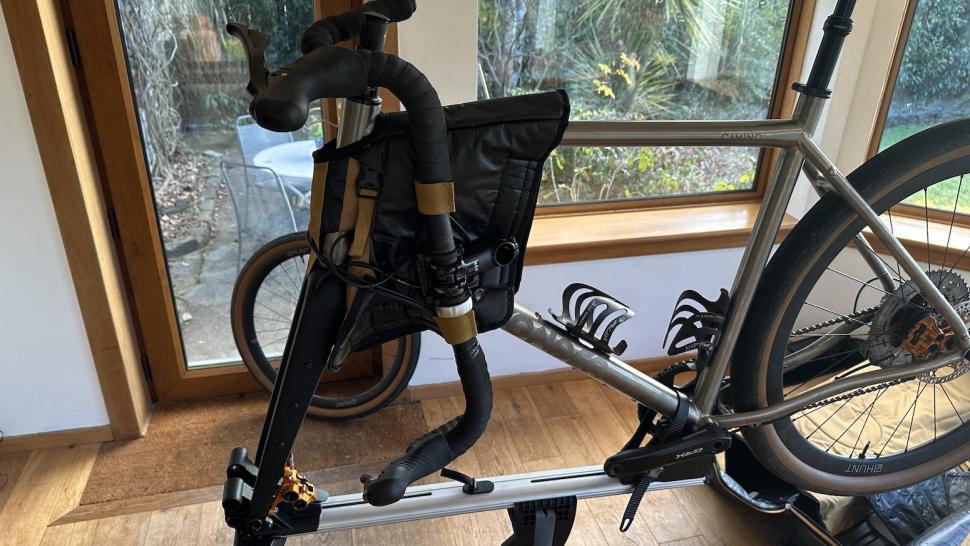
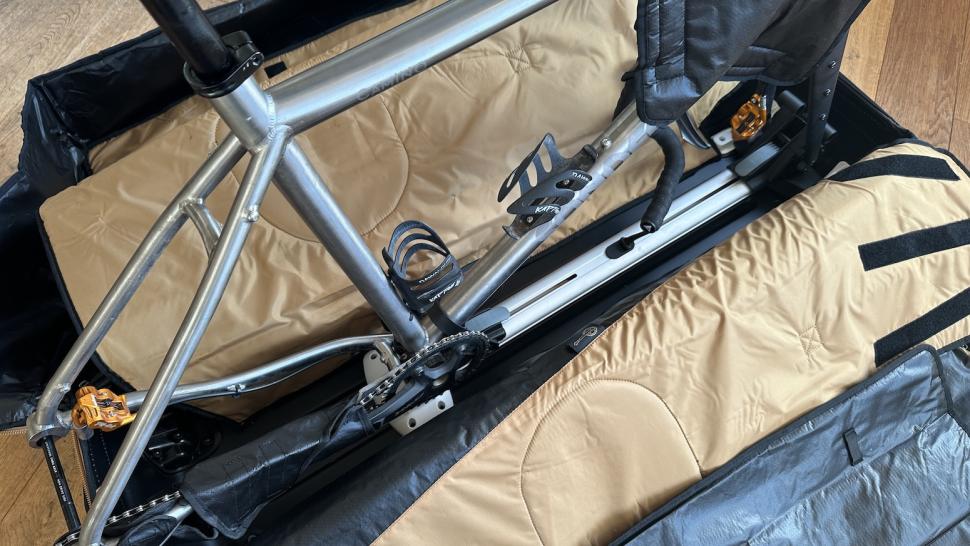
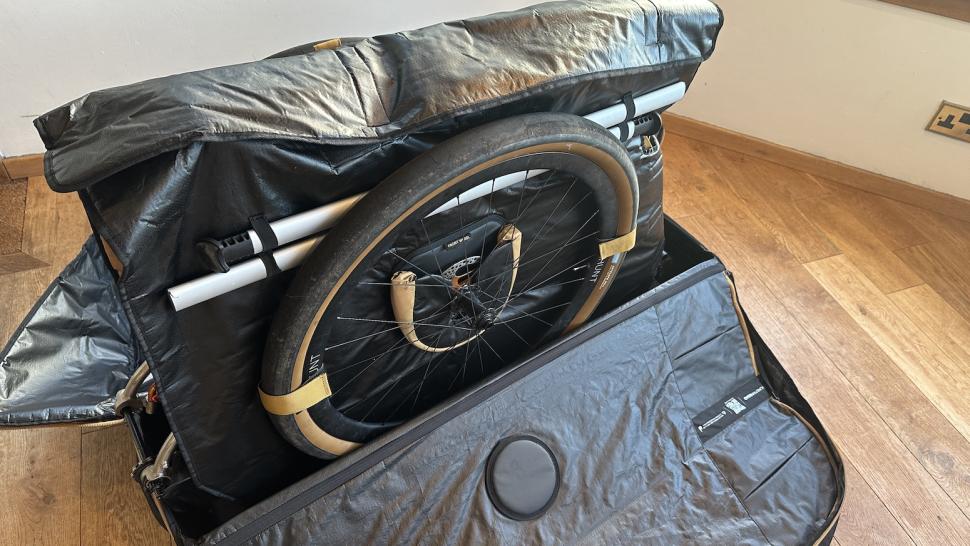
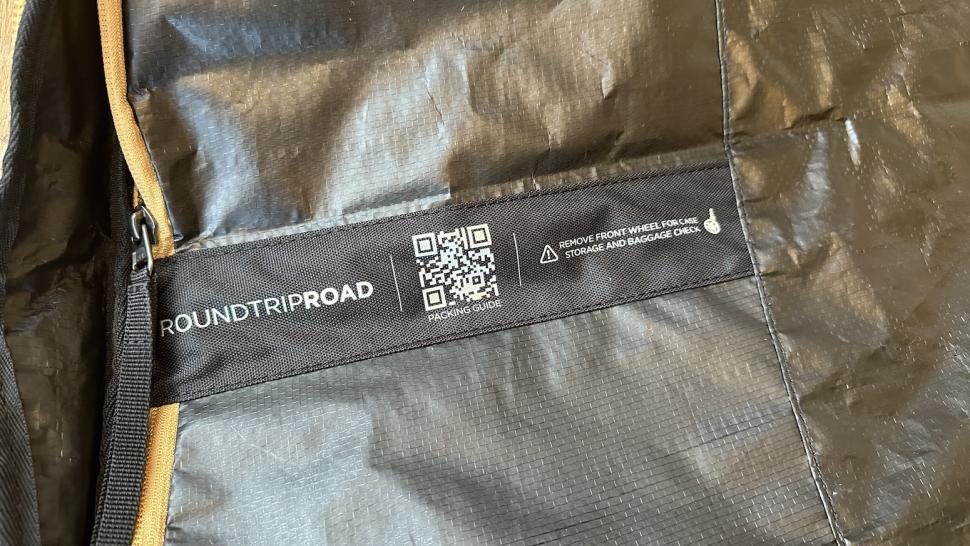
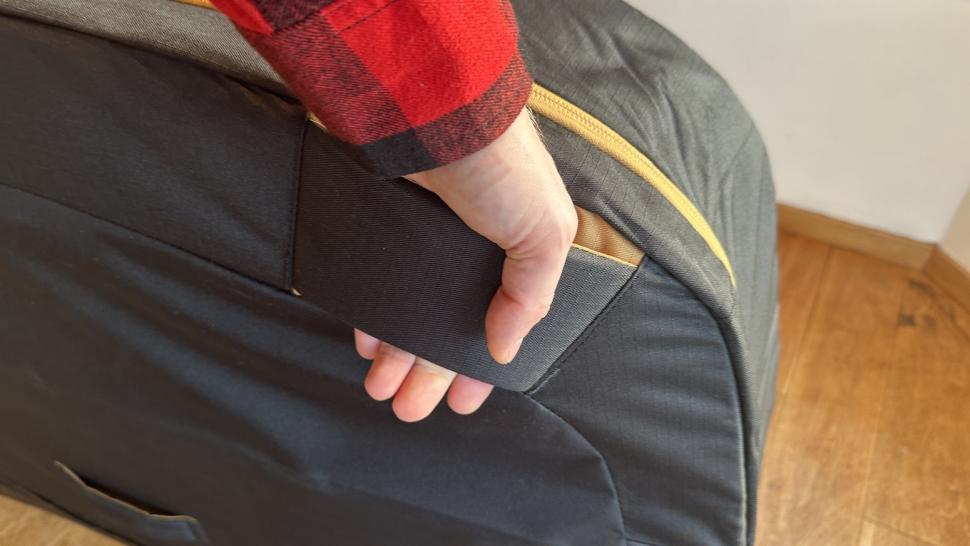
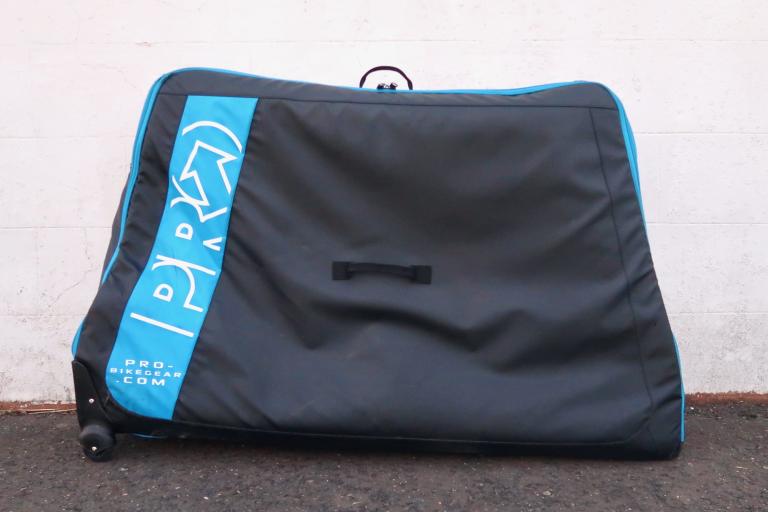
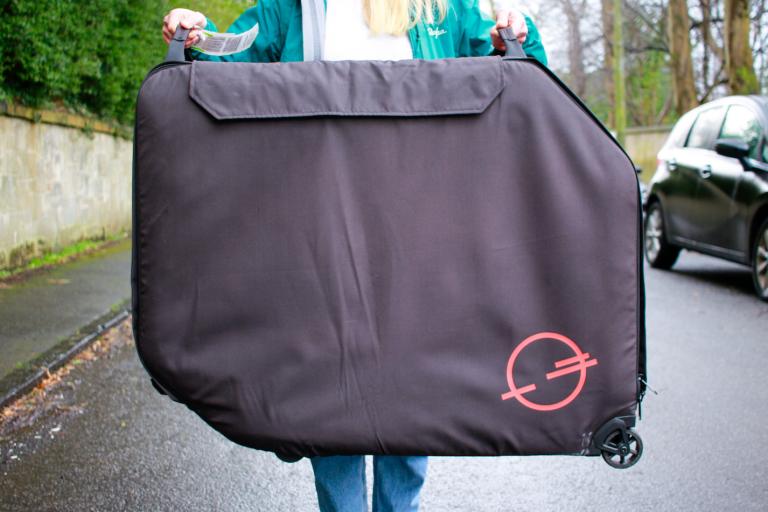
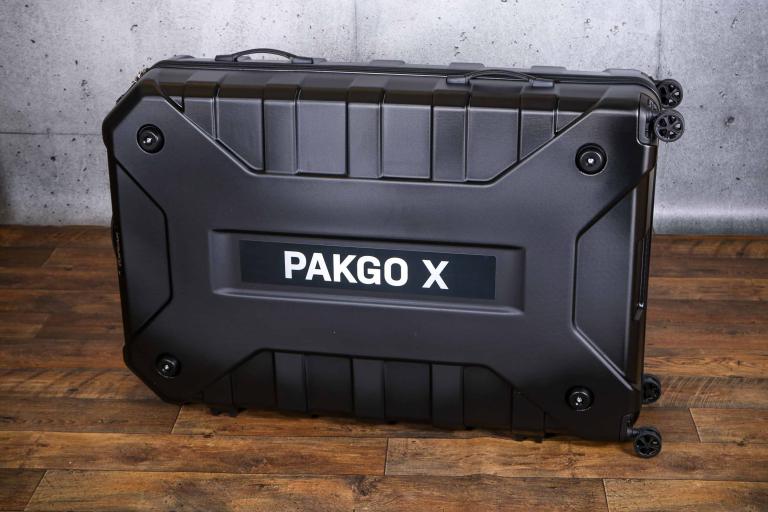

Add new comment
3 comments
Absolutely would not use anything else but a Bike Box Alan.
The Aero EasyFit box is worth every single penny if you travel regulalrly with your bike. Literally just wheels & pedals off & that's it.
Agreed. Bike Box Alan is brilliant. I would be tempted by the maintenance stand that comes with the Thule though, but have some concerns over how wide the box looks. The BBA counts as a suitcase if travelling with BA, so no additional 'sports luggage' charges (admittedly it's been a while since I flew with my bike so that may have changed?)
I would be proper stuck as to what bag or even box would be best. Yes as said the Evoc pro is often seen as the lead contender, but B W do a bike bag plus Dakine have a bag that gets good reviews. This is before you look at stuff like Shoxbox and bike box direct these are hard cases that are all at the same price points. It not an easy choice to make.